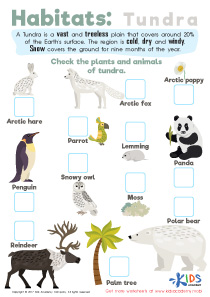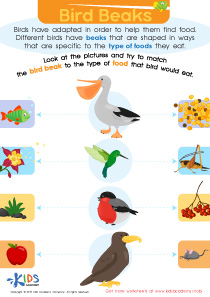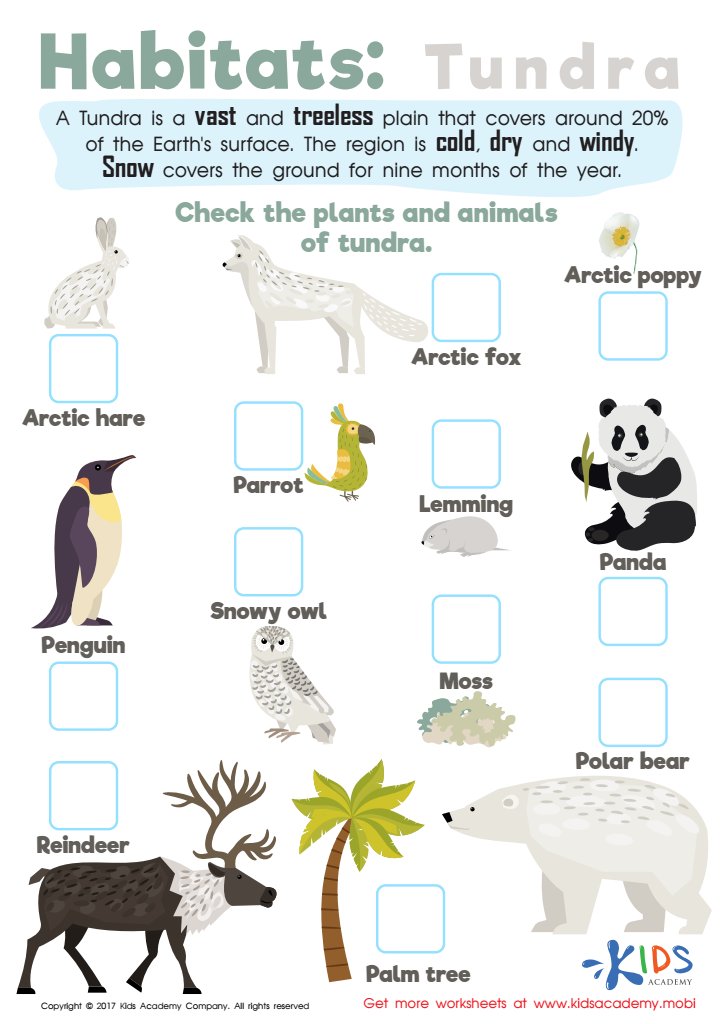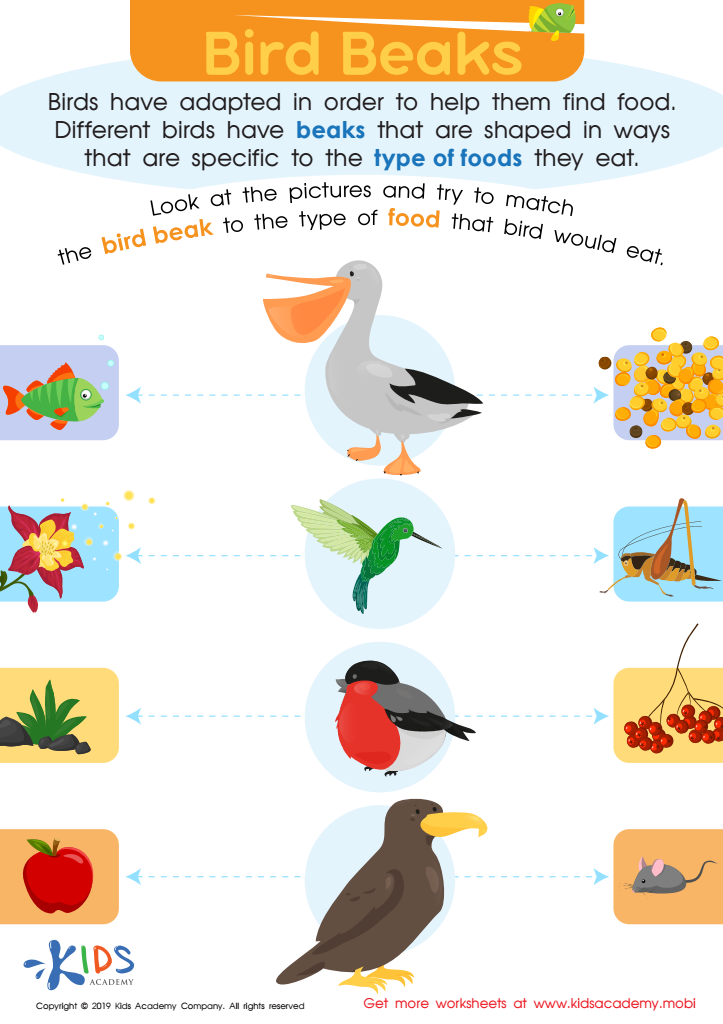Adaptating to Survive - Lesson for Grade 3, Chapter - Organisms
In the "Adapting to Survive" lesson, designed specifically for Grade 3 students as part of their Science curriculum on Organisms, learners embark on an intriguing journey to understand how animals have evolved to thrive in their environments. Through engaging activities like the Tundra Habitats Worksheet and the Bird Beaks Worksheet, students will delve into the fascinating world of animal adaptations.
By exploring Tundra Habitats, students will learn about the harsh conditions animals face in cold environments and the unique adaptations they develop for survival, such as thick fur and fat layers. This segment of the lesson highlights the importance of physical traits in withstanding extreme climates.
The Bird Beaks Worksheet allows students to discover how different birds have beaks that are perfectly suited to their feeding habits, illustrating the concept of adaptation to available resources in various environments. Students will learn that a bird's beak shape can determine what it eats and how it interacts with its ecosystem.
Understanding animal adaptations is crucial for students, as it emphasizes the interconnectedness of all living organisms and the importance of biodiversity.


-
Activity 1 / Tundra Habitats Worksheet
Increase scientific vocabulary while learning more about habitats of the world using this cool tundra habitats worksheet for 3rd grade! Learners start out reading exciting and informative facts about tundra.
Then, kids identify animals that live thrive in the tundra based on prior knowledge! -
Activity 2 / Bird Beaks Worksheet
Birds have adapted their beaks throughout time to help them find food. Different birds have different beaks because they eat different things. This colorful worksheet will help your little scientist have a better picture of what different beak shapes and sizes can do for birds when they're finding food. Then, they'll use the traceable lines to match each bird's beautiful beak with the type of food it would eat based on the size and shape. They'll love learning about how each beak size and shape is purposed to be just right!


